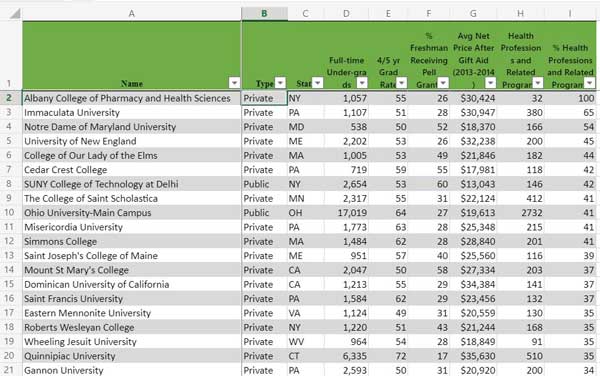 According to the Bureau of Labor Statistics, the occupation that is projected to have the second largest number of new jobs between 2014 and 2024 requires only a bachelor’s degree and had a 2015 median pay of $67,490 per year. It’s not engineering or computer programing. It’s nursing.
According to the Bureau of Labor Statistics, the occupation that is projected to have the second largest number of new jobs between 2014 and 2024 requires only a bachelor’s degree and had a 2015 median pay of $67,490 per year. It’s not engineering or computer programing. It’s nursing.
Nursing is projected to be among the faster growing professions as well. Registered nurses are expected to increase by 16% compared to just 7% for all occupations. And given the increasing pressure on reducing healthcare costs, it’s likely that nurses role in healthcare will only be expanding.
Nursing dominates the generic “Health Professions and Related Clinical Sciences” major category at the Bachelor’s degree level representing well over half of all degrees. There are 51 50-50 schools where Health Professions account for 20% or more of all majors among graduates.
This category does include other majors such as official pre-med majors, health care management, speech language pathologists, athletic trainers, and dental hygienists. The presence of these programs varies by schools and degree levels. But in virtually all cases, nursing is the largest major in the category.
All potential majors should check with their state nursing board for specific requirements. Students interested in nursing will need to pass the NCLEX examination in order to receive their state license. The should also look up the NCLEX passing rates for the programs they’re considering. You just need to search on your state and “nclex passing rates” and you should find a listing for all the programs in your state. You can see an example of California’s information here.
The following tables list the 50-50 schools with the most graduates with majors in Health Professions and Related Clinical Sciences category . The first table shows the institutions with 20% or more of graduates in the Health Professions. The second table lists the 50-50 schools with largest number of majors in the category. There are eleven schools that are on both lists. As usual, the five-year graduation rate is used for public schools and the four-year rate for private ones.
50-50 Colleges with the Most Health Professions Majors



